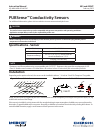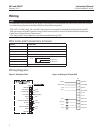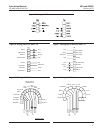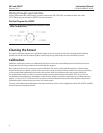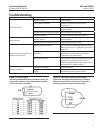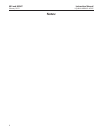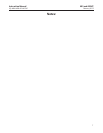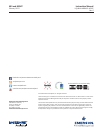
4
Wiring through a Junction Box
If wiring connections are made through a remote junction box (PN 23550-00), wire point-to-point. Use cable
23747-00 (factory-terminated) or 9200275 (no terminations).
Pin Out Diagram for 400VP
Figure 10. VP pin-out (viewed from connector end of
sensor, looking down)
Cleaning the Sensor
Use a warm detergent solution and a soft brush or pipe cleaner to remove oil and scale. Isopropyl alcohol (rubbing
alcohol) can also be used to remove oily lms. Avoid using strong mineral acids to clean conductivity sensors.
Calibration
PURSense conductivity sensors are calibrated at the factory and do not need calibration when rst placed in service.
Simply enter the cell constant printed on the label into the analyzer.
After a period of service, the sensor may require calibration. The sensor can be calibrated against a solution having
known conductivity or against a referee meter and sensor. If using a standard solution, choose one having conductivity
in the recommended operating for the sensor cell constant. Refer to the analyzer manual or product data sheet
for recommended ranges. Do not use standard solutions having conductivity less than about 100 uS/cm. They are
susceptible to contamination by atmospheric carbon dioxide, which can alter the conductivity by a variable amount as
great as 1.2 uS/cm (at 25°C). Because 0.01/cm sensors must be calibrated in low conductivity solutions, they are best
calibrated against a referee meter and sensor in a closed system.
For more information about calibrating contacting conductivity sensors, refer to application sheet ADS 43-024, available
on the Rosemount Analytical website.
403 and 403VP Instruction Manual
February 2015 LIQ-MAN-ABR-403-403VP



